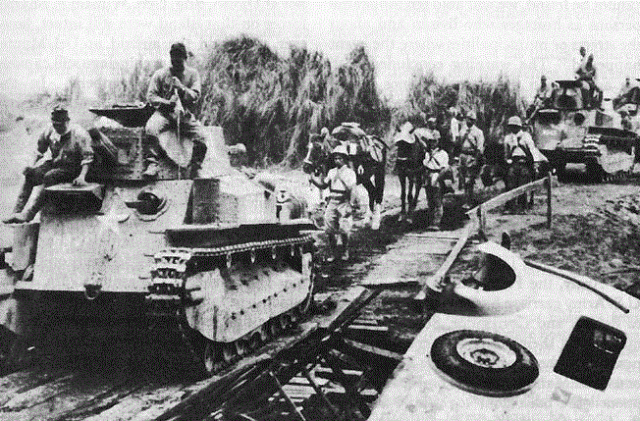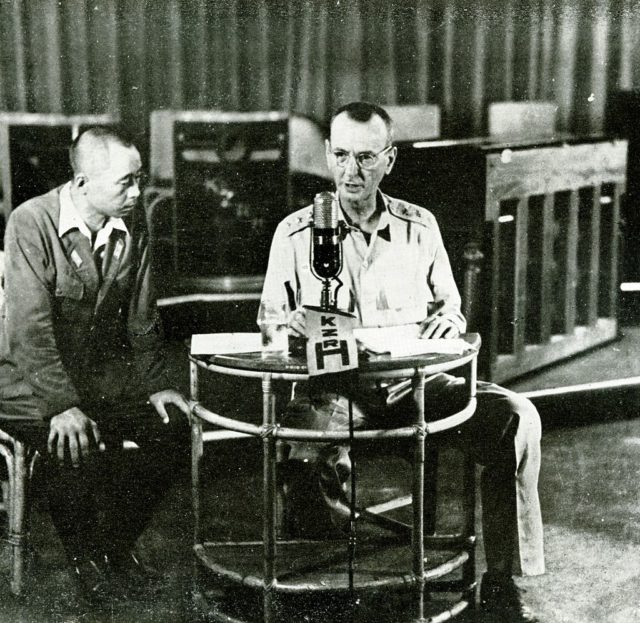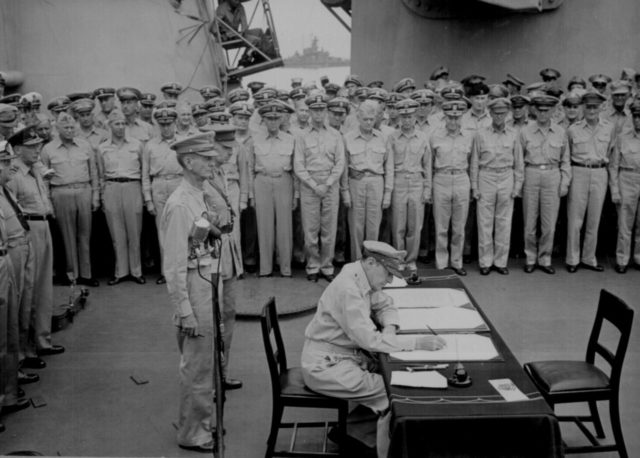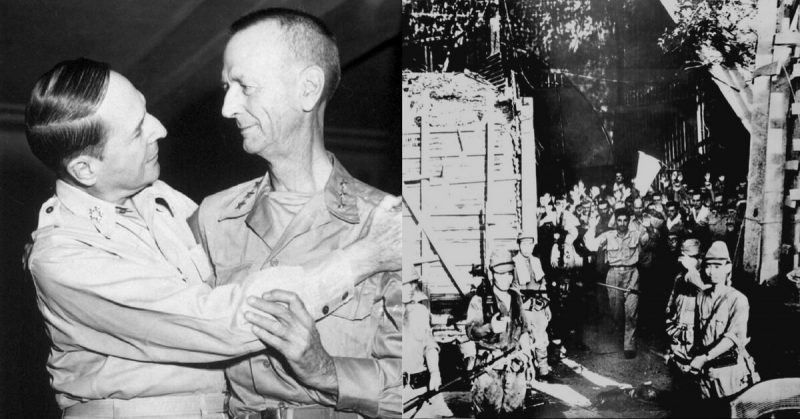Being captured by the Japanese during the early days of WWII meant facing years of grueling conditions, torture, and starvation. Also, many were cut off from almost all information regarding the greatest conflict ever. How soon would the war end? Who was winning? When would they be free again?
For Lieutenant General Jonathan Wainwright, it meant years of anguishing over his surrender of troops on the beleaguered island of Corregidor. Facing a massacre of both his troops and the local civilian population, Wainwright had to make an impossible decision. When he became the highest ranking POW of the war, he was tormented by his decision and what his country must have thought of him back home. It was not until his release in 1945 that realized he was, in fact, a hero and recommended for the nation’s highest military honor.
From World War 1 to Corregidor
Jonathan Wainwright was born in 1883 at Fort Walla Walla, Washington to a family with a long military tradition. His grandfather was killed in action during the American Civil War, and his father served during the Spanish-American War. Wainwright was destined for combat in not one, but two World Wars.
Graduating from West Point in 1906, he was assigned to the US 1st Cavalry Regiment where he got his first taste of combat in the Philippines from 1908 to 1910. Showing a quick mind under stress and a willingness to jump into the fight himself, Wainwright spent the next ten years rising through the ranks. By 1918, he was again in the thick of the fight in World War 1 as a Lieutenant Colonel.
After that war, Wainwright attended a variety of staff schools and served in various commands until he was promoted to Brigadier General in 1938.
In 1940, he was promoted to Major General and returned to the Philippines where he served under General Douglas MacArthur. Aware that the clouds of war were gathering and reinforcements would take some time to arrive from the United States, plans for the defense of the Philippines were being drawn up.

For some men, it would be to hold the ground at all costs as reinforcements were just months away, six at the most. For Lieutenant General Wainwright this plan would be the rallying cry to his troops and also a huge disappointment when help never arrived. This event would put him at odds with General MacArthur, but in the end, the decision to fight or surrender fell to Wainwright.
Storming the Philippines
On December 8, 1941, the Japanese brought the war to MacArthur and Wainwright. Commanding a combination of American and Filipino troops, it became apparent early on the Japanese had an overwhelming force. Executing pre-war plans to hold out in the Philippines until reinforcements arrived from the mainland, MacArthur ordered Wainwright to delay at all costs. Throughout the conflict, he could frequently be seen close to the action and directly engaged in the fight reinforcing his title as “the Last Fighting General.”
However, the superior Japanese forces proved too capable, and the order was given to withdraw to the infamous Bataan Peninsula and the fortress island of Corregidor. Then Bataan, having endured several months of siege, was completely overrun in April 1942. It left only the island of Corregidor commanded by Wainwright to determine the fate of the rest of the forces in the Philippines. Having withdrawn to Australia, MacArthur ordered Wainwright to hold out at all costs, but the General on Corregidor saw a different picture.

Wainwright and the men of Corregidor continued their courageous stand. Again, Wainwright could be seen checking the front lines, leaping in and out of foxholes, and firing back at the Japanese as best he could.
However, by May 6 they were exhausted. The promised reinforcements had not materialized. To avoid the impending slaughter of his forces that had fought so hard Wainwright assessed they could fight no more. Attempting to surrender only the forces on Corregidor, he contacted the Japanese. They refused, recognizing they could use the survivors as hostages. Realizing the atrocity ready to take place and the inability to fight any longer, Wainwright surrendered all the Philippine forces on May 8, 1942.
An Honor Delayed
Remarkably, when word went out about Wainwright’s brave stand and his capture at the hands of the Japanese, he was recommended for the Medal of Honor by General George Marshall. However, Wainwright’s friend General Douglas MacArthur objected. Believing Corregidor should never have been surrendered MacArthur’s objection held up the award while Wainwright suffered in a variety of Japanese POW camps throughout the duration of the war.
MacArthur eventually made his famed return to the Philippines in 1944, and by August 14, 1945, the Japanese had announced their surrender. It was not until August 19 nearly a week later that Wainwright learned of the war’s end. He had spent the duration of the war as the highest ranking POW. For years he had anguished over his decision to surrender Corregidor and had believed throughout the length of his captivity that he had been a failure.

On September 2, Wainwright joined General MacArthur on the USS Missouri to watch the Japanese surrender. Lt. General Wainwright received his Medal of Honor. The man who believed he would spend his life a failure was now the subject of ticker tape parades and the nation’s highest military honor for his gallant stand on Corregidor.
